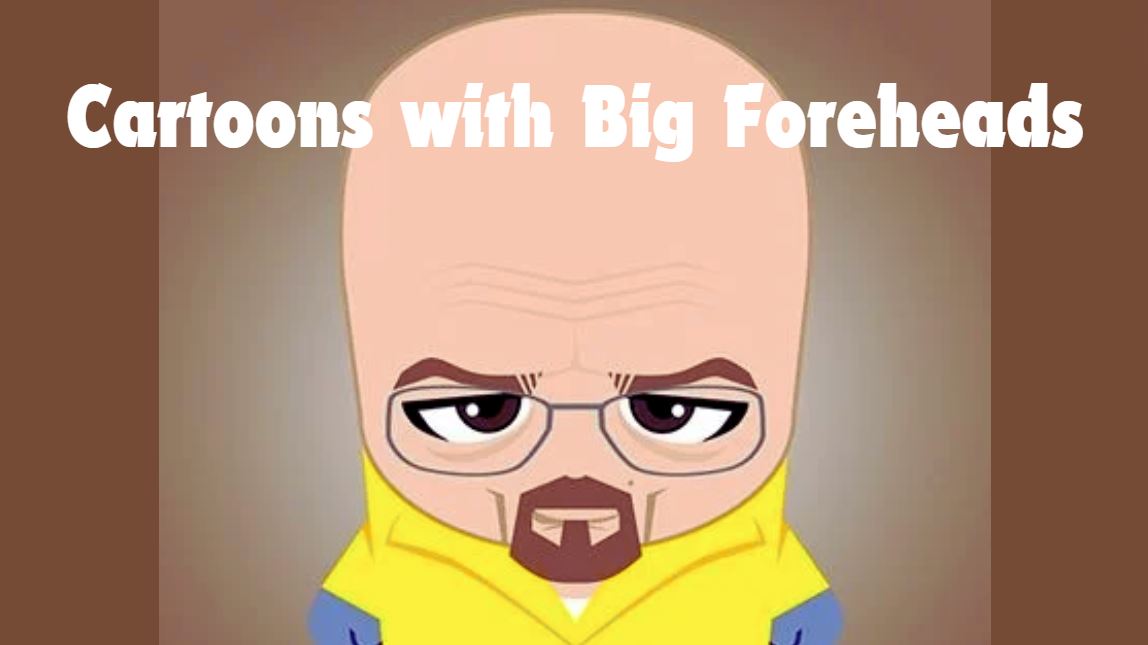Cartoons have long been a source of entertainment, offering audiences a glimpse into imaginative worlds populated by colourful characters. Among these characters, some stand out not just for their personalities or powers.
Characters with big foreheads often have foreheads that are noticeably larger compared to their other facial features.
In this article, we’ll explore the significance of big foreheads in cartoons, highlight some of the most memorable characters with this trait, and analyze why this design choice resonates with audiences.
What are cartoons with big foreheads? – standing classy in the world of animation!
Cartoons with big foreheads stand out in the world of animation by showcasing characters with distinctive and memorable designs. These exaggerated features are not merely for visual impact; they often symbolize intelligence, uniqueness, or specific personality traits.
From the genius Jimmy Neutron with his oversized brain to the mischievous Stewie Griffin, whose football-shaped head complements his cunning personality, these characters use their prominent foreheads to enhance their roles in their respective stories.
Their unusual looks create a lasting impression and make them easily recognizable to audiences. This design choice allows for a wider range of facial expressions, which can amplify comedic effects or convey complex emotions more vividly.
Characters like Arnold from “Hey Arnold!” and Dexter from “Dexter’s Laboratory” use their large foreheads not just to stand out visually but to add depth to their characterizations. By integrating these unique features into their designs, these cartoons capture viewers’ attention and create a lasting impact on popular culture.
Emphasizing Intelligence and Wisdom – visual elements to define character traits!
A big forehead in cartoon characters often serves as a visual shorthand for intelligence and wisdom. Traditionally, a larger forehead has been linked with higher intellect and mental acuity. This design choice allows creators to quickly convey a character’s intellectual prowess without the need for extensive backstory.
This subtle visual cue immediately signals to viewers that these characters are not just ordinary kids but extraordinary thinkers with advanced knowledge. In cartoons, emphasizing intelligence through a big forehead also enhances the character’s visual identity and role within the story. By making a character’s forehead notably larger, animators can differentiate them from other characters and highlight their exceptional cognitive abilities.
This approach not only makes these characters more memorable but also aligns their physical traits with their intellectual attributes. As a result, audiences quickly associate their distinctive looks with their smarts, reinforcing their role as intellectual heroes in their respective narratives.
Creating a Unique and Memorable Look:
A prominent forehead can serve as a distinctive stylistic choice that differentiates a character from the rest. In the bustling world of animation, where characters often blend into a sea of visual sameness, unique physical traits help ensure that a character stands out.
For instance, Arnold from Hey Arnold! is easily identifiable thanks to his unique football-shaped head, which prominently includes a large forehead.This unique design element not only enhances Arnold’s visual identity but also contributes to the overall aesthetic and charm of the show.
Enhancing Expressiveness:
A large forehead also offers the advantage of amplifying facial expressions. With more space available for conveying emotions, animators can exaggerate a character’s reactions, adding greater depth and nuance to their interactions.
This is particularly evident with characters like Stewie Griffin from “Family Guy,” whose oversized, football-shaped head allows for a wide range of expressive and comedic reactions. This design choice enriches the character’s ability to convey humour and emotion, making their portrayal more engaging and dynamic.
Notable Cartoon Characters with Big Foreheads!
Jimmy Neutron Character Overview:
Jimmy Neutron, the central figure of “The Adventures of Jimmy Neutron: Boy Genius,” is a young prodigy whose exceptionally large forehead symbolizes his immense brainpower.
Significance: Jimmy’s oversized forehead is more than a mere stylistic choice; it represents his intellectual prowess and inventive spirit. His ability to craft elaborate gadgets and tackle complex problems is visually communicated through his distinctive forehead, reinforcing his character as a brilliant young inventor.
Stewie Griffin Character Overview:
Stewie Griffin from Family Guy is an infant with a uniquely large, football-shaped head.
Significance: Stewie’s prominent forehead accentuates his sophisticated intelligence and cunning personality. This design element is crucial to his character’s comedic appeal and plays a significant role in the show’s humor and plot development, showcasing his elaborate schemes and intellectual depth.
Arnold Character Overview:
Arnold from Hey Arnold! is easily recognizable due to his distinctive head shape, commonly known as “football head,” featuring a prominently large forehead.
Significance: Arnold’s distinct forehead is a central aspect of his character design, making him a standout figure in animation. This feature not only enhances his visual identity but also contributes to the show’s unique style and narrative, often influencing the character’s interactions and storylines.
Megamind Character Overview:
Megamind, from the film “Megamind,” is an alien with an exaggeratedly large blue head.
Significance: The massive size of Megamind’s forehead highlights his extraordinary intelligence and alien background. This visual trait contrasts humorously with his clumsy behaviour, enriching the film’s comedic elements and character development.
Dexter Character Overview:
Dexter from Dexter’s Laboratory is a young prodigy with a notably prominent forehead.
Significance: Dexter’s large forehead accentuates his role as a young scientific genius. The design choice effectively underscores his intellectual capabilities and inventive nature, making it a key visual element that supports his character’s narrative as a brilliant young inventor.
The Psychology Behind Big Foreheads – Animation Design Today!
The choice to design cartoon characters with big foreheads is grounded in psychological and cultural contexts. Let’s explore why this visual trait has such a strong impact:
Association with Intelligence:
Historically, larger foreheads have been associated with intelligence and wisdom. This connection is leveraged in animation to immediately signal a character’s intellectual abilities. By enlarging the forehead, animators align with these cultural perceptions, helping viewers quickly grasp the character’s cognitive skills and role within the story.
Creating Memorable Characters:
In a crowded media landscape, making characters stand out is essential. Unique physical features, such as an oversized forehead, help characters become more memorable and distinctive. These traits enhance character recognition and foster brand loyalty, which is crucial for merchandising and engaging with the audience.
Enhancing Emotional Expression:
A larger forehead offers a greater canvas for facial expressions, allowing animators to convey a wide array of emotions more vividly. This feature is particularly advantageous in comedic settings, where exaggerated expressions can amplify the humour. For example, characters like Stewie Griffin benefit from this design, as it enables more expressive and dynamic animations.
FAQS:
Q1. Why do some cartoon characters have big foreheads?
Cartoon characters often have big foreheads to symbolize intelligence and create a memorable, unique appearance that stands out.
Q2. What is the significance of a big forehead in character design?
A big forehead helps convey a character’s intellect and enhances their expressiveness, making them more distinctive and engaging.
Q3. Can a big forehead affect how a character is perceived?
Yes, it often signifies wisdom or advanced intellect, influencing how audiences perceive the character’s role and personality.
Q4. Are big foreheads used for comedic effect in cartoons?
Big foreheads can enhance comedic elements by exaggerating facial expressions and reactions.
Q5. Which cartoon characters are known for having big foreheads?
Notable examples include Jimmy Neutron, Stewie Griffin, Arnold from “Hey Arnold!,” Megamind, and Dexter from “Dexter’s Laboratory.”
Conclusion:
cartoon characters with big foreheads are more than just a unique visual trait—they embody intelligence, enhance expressiveness, and contribute to memorable character design. From Jimmy Neutron’s inventive genius to Stewie Griffin’s cunning humour, these characters use their distinctive foreheads to signify their roles and impact the audience. This design choice not only helps characters stand out in a crowded media landscape but also enriches storytelling by visually communicating key attributes. As animation continues to evolve, the legacy of big foreheads in cartoons underscores their lasting appeal and significance in character development.

 Entertainment4 months ago
Entertainment4 months ago
 Entertainment4 months ago
Entertainment4 months ago
 Technology5 months ago
Technology5 months ago
 Business5 months ago
Business5 months ago
 Technology5 months ago
Technology5 months ago
 Travel5 months ago
Travel5 months ago
 Business5 months ago
Business5 months ago
 Life Style5 months ago
Life Style5 months ago



